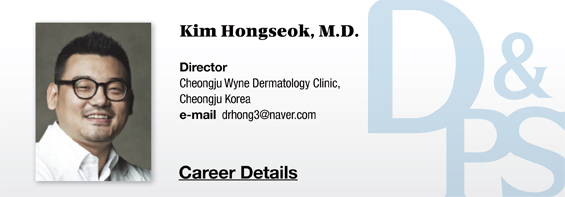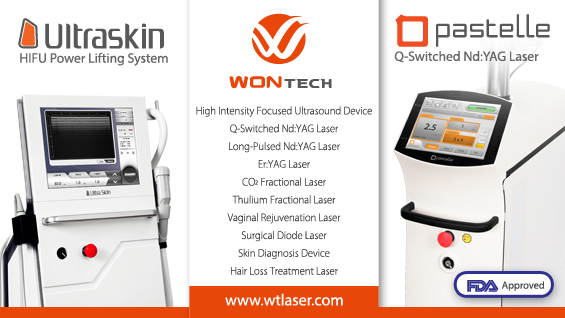
Vitamin C is a naturally occurring, potent antioxidant and is commonly used in dermatology for treatment of pigmented lesions or photoaging. In the past, vitamin C played an important role in preventing scurvy. In the 18th century, sailors consumed citrus fruits to prevent gum bleeding, characteristic nevus-like lesions and mental deterioration.
Researchers of the 1930s found that vitamin C, the main ingredient of citrus fruit, prevented scurvy. Most plants and animals can synthesize vitamin C from glucose but humans lack L-glucono-gamma lactone oxidase and need to ingest vitamin C from external sources such as citrus fruit, black currant, pepper, and leafy vegetables, etc. However, oral intake of vitamin C does not increase the vitamin C content in the skin. Intestinal absorption of vitamin C is very limited even with a high-dose intake. Environmental factors such as ultraviolet rays, ozone, and pollution, etc. are exacerbating vitamin C depletion of the epidermis. It is important to increase the vitamin C level of the skin to fully benefit from its powerful antioxidant action.
Vitamin C is also known as ascorbic acid and its antioxidant action is extensively studied. Oral intake of vitamin C is associated with a lowered risk of cardiovascular diseases, cataract, and certain types of cancer. It is also known to enhance wound healing and immunity. Vitamin C is also widely used as a topical agent for UV blocking, as well as in melasma, striae distensae, and post-laser erythema.
[Advertisement] Ultra Skin/Pastelle – Manufacturer: WONTECH(www.wtlaser.com)
Components of vitamin C
Vitamin C or ascorbate is a water-soluble covalent bond between hydoxyl anion with α-ketolactone. This electron bonds to ascorbate to form ascorbate free radical. This temporary structure is relatively more stable than other free radicals and is receptive to other electrons, which enables it to act as a free radical scavenger which is an excellent antioxidant. When this temporary structure cannot receive electrons, it can work as a donor of an electron through enzyme reaction.
When two electrons are attached to ascorbic acid, this forms dihydro-L-ascorbic acid (DHAA). In physiological phenomena, vitamin C exists in the reduced form of ascorbic acid and the oxidized form of DHAA in a small amount. These substances can be reduced to ascorbate. However, they cannot be further activated if the lactone ring is irreversibly open, forming diketogulonic acid.
Diketogulonic acid mainly forms when vitamin C oxidizes. Solutions that develop diketogulonic acid loses therapeutic efficacy. In other words, vitamin C exposed to UV or air quickly receives two electrons, turning into DHAA and forming aromatic ring. After further oxidization, this ring opens, irreversibly deactivating vitamin C.
L-ascorbic acid is the chemically activated form of vitamin C and is similar to and interchangeable with the naturally occurring D-ascorbic acid. However, only L-ascorbic acid is the active form that can be used for medical purposes.
-To be continued




















